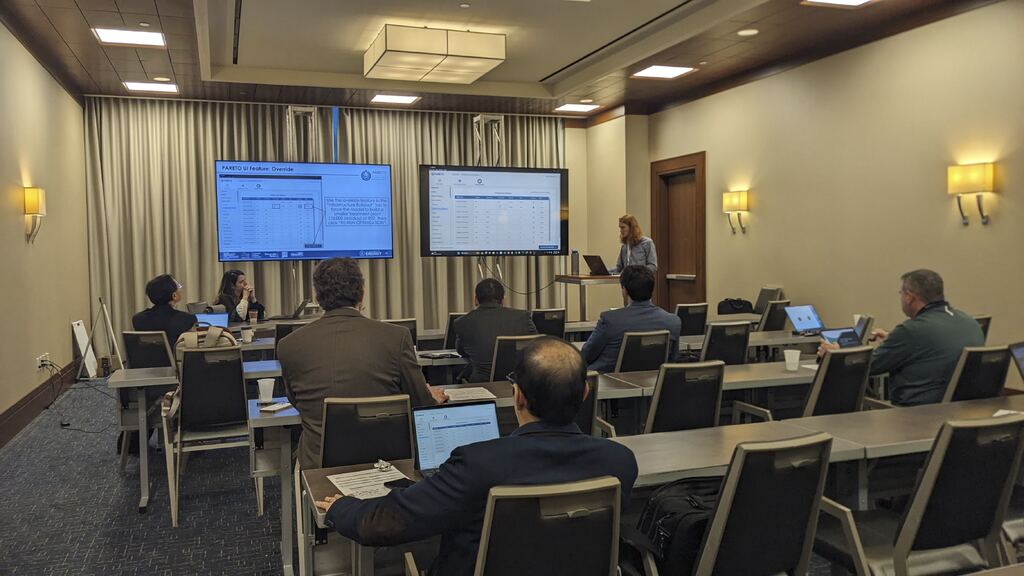Capabilities
Water Management
One of PARETO’s most fundamental capabilities is water management. Given the structure of a water network, the forecast for produced and flowback water, and information about available transportation resources (trucks and pipelines), PARETO can provide an optimal schedule of water flows, deliveries, and source-to-sink matching. PARETO also features a built-in utility to generate Sankey diagrams to visualize water flow throughout the network.
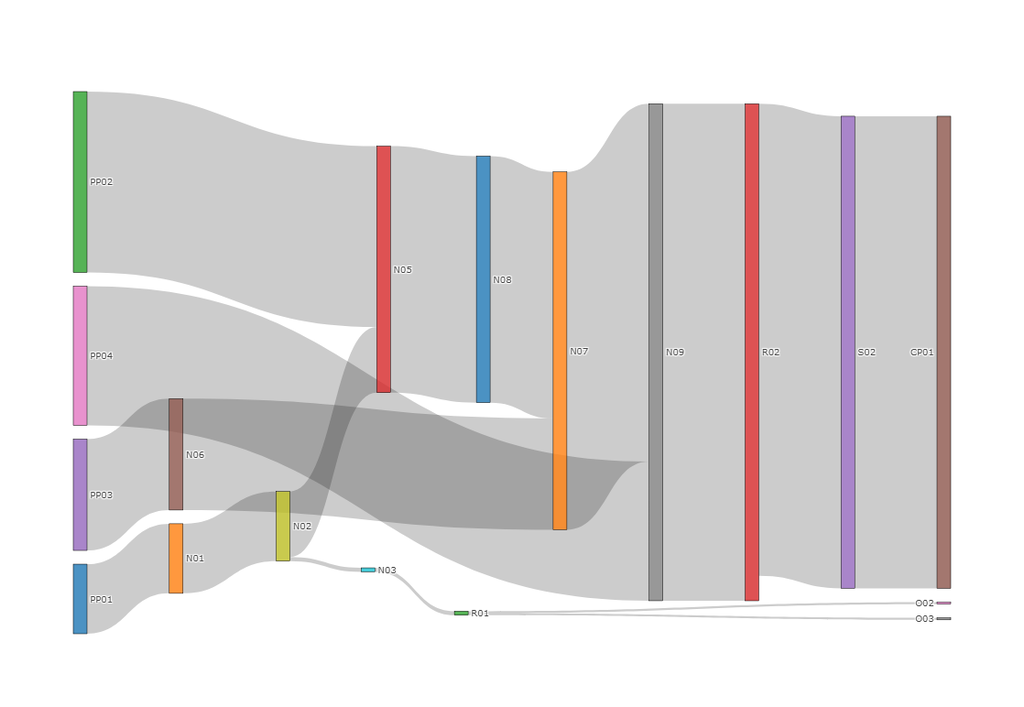
Infrastructure Buildout
Another one of PARETO’s core capabilities is the ability to provide infrastructure buildout recommendations. Suggestions of locations and sizes for pipelines, treatment plants, storage facilities, and saltwater disposal wells (SWDs) are summarized in a convenient table.
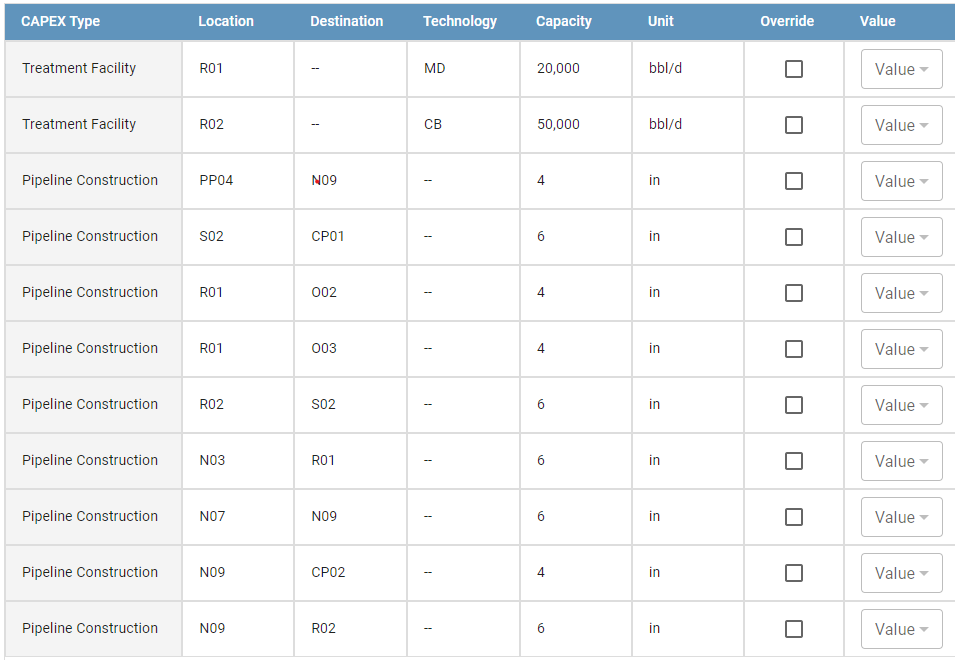
Treatment and Beneficial Reuse
PARETO allows the user to rigorously analyze the effect of different water treatment technologies (both desalination and clean brine) and the availability of viable downstream beneficial reuses on the overall economic outlook for produced water networks.
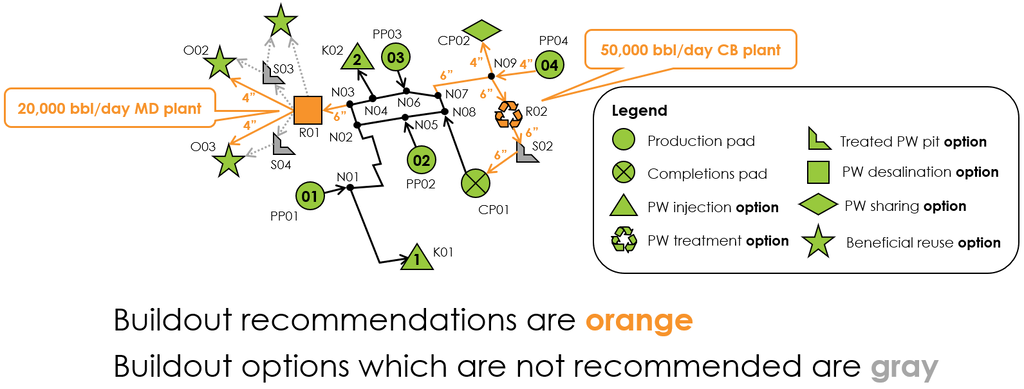
Rigorous Desalination Models and Surrogate Models
Water treatment systems are essential in achieving the necessary water quality for various applications, including beneficial reuse and critical minerals recovery. The associated costs, influenced by the treatment’s intensity, significantly affect the overall investment in produced water management strategies.
PARETO introduces three methodologies to navigate these challenges:
- Discrete Input Values Methodology: Utilizes the PARETO framework to conduct cost analysis with discrete input values derived from vendor data or existing literature, providing cost insights for varying expansion sizes of treatment plants.
- Rigorous Model Deployment: PARETO leverages the capabilities of the WaterTap library to implement rigorous process design and optimization of water treatment and desalination systems. This includes desalination technologies such as Osmotically Assisted Reverse Osmosis (OARO), Mechanical Vapor Compression (MVC), and Membrane Distillation (MD), capable of treating hypersaline produced water.
- Surrogate Models for Computational Efficiency: To facilitate streamlined computational analysis, PARETO utilizes machine-learning surrogate models. These models offer a practical approach for simplifying the complexity of rigorous models in situations marked by computational constraints, such as the integration of treatment models with the produced water management network.
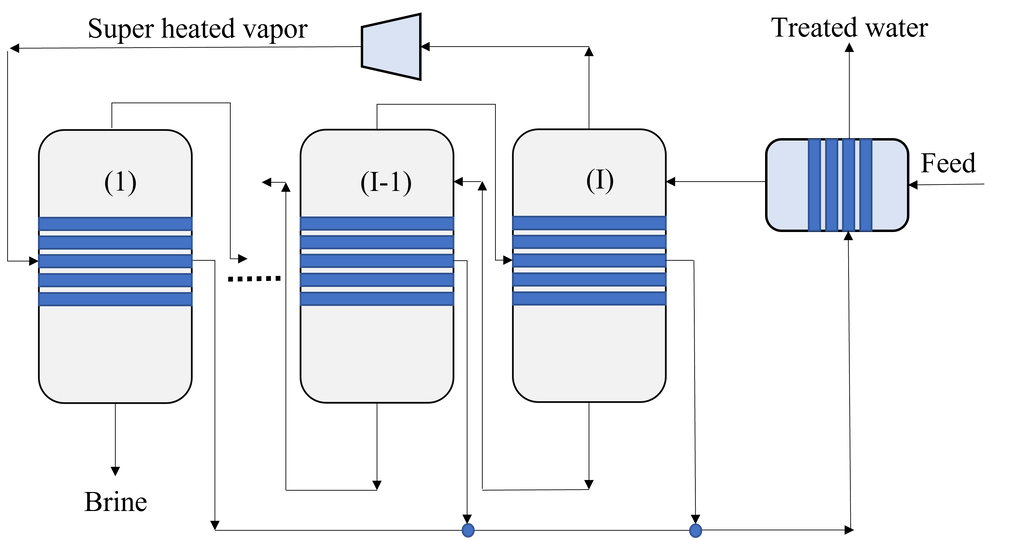
Hydraulics
PARETO’s hydraulics module provides insights into the pressures, flow profiles, and pumping requirements over time throughout produce water networks.
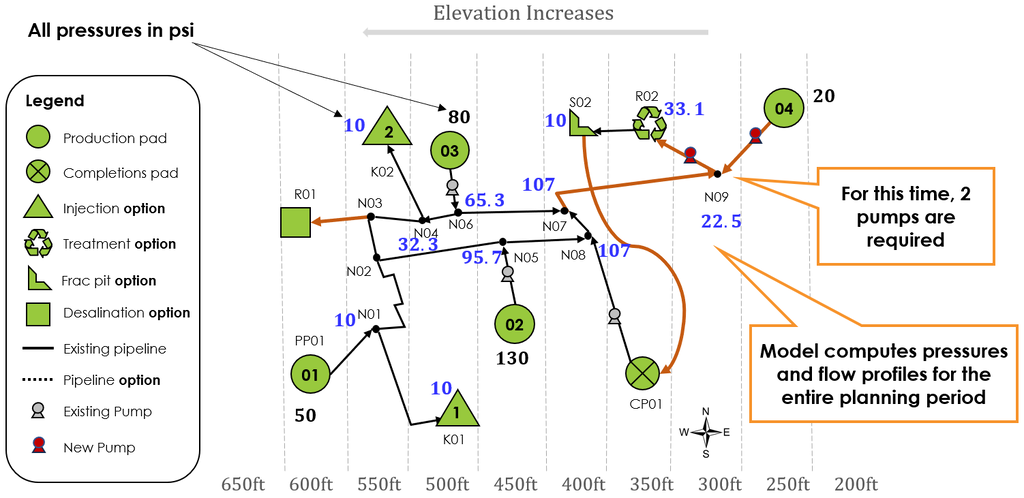
Water Sharing
AquaTrade is PARETO’s inter-operator water management tool, helping operators find new opportunities for produced water recycling, and reducing operational needs for sourced water and produced water disposal.
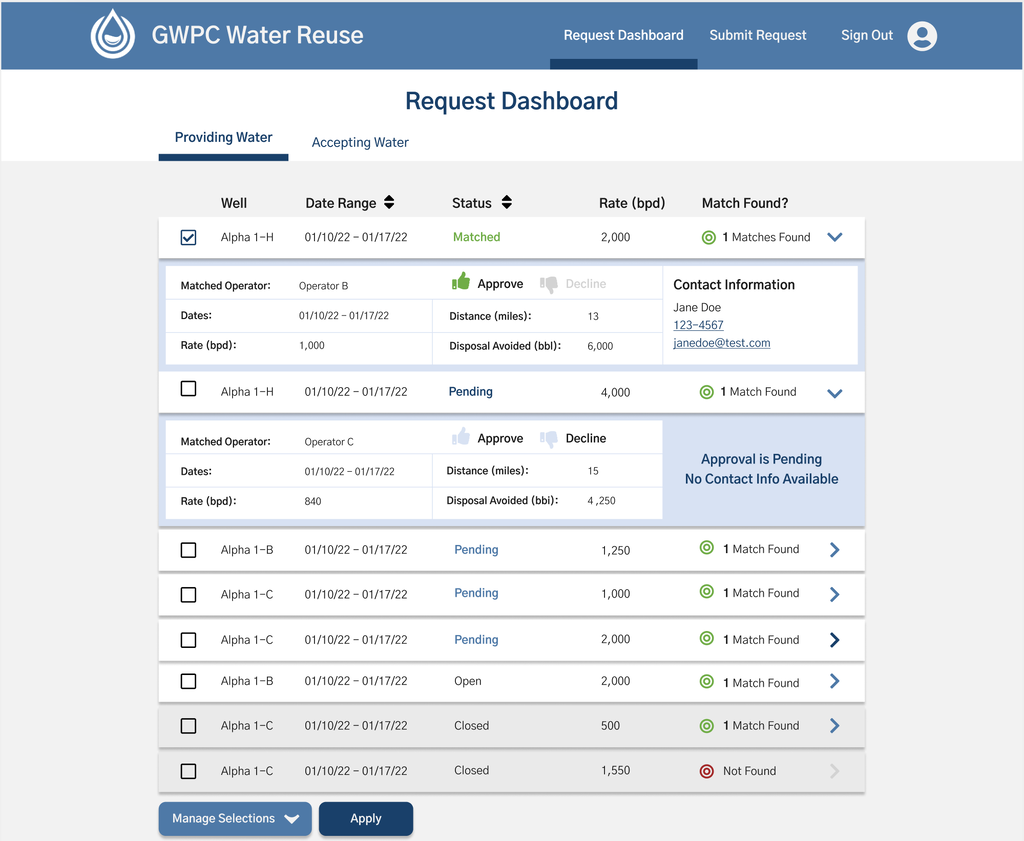
Learning Resources
The PARETO team has developed a training workshop as well as tutorials and examples designed to help users learn the ins and outs of the software and how to make the greatest use of the project’s tools and utilities.
